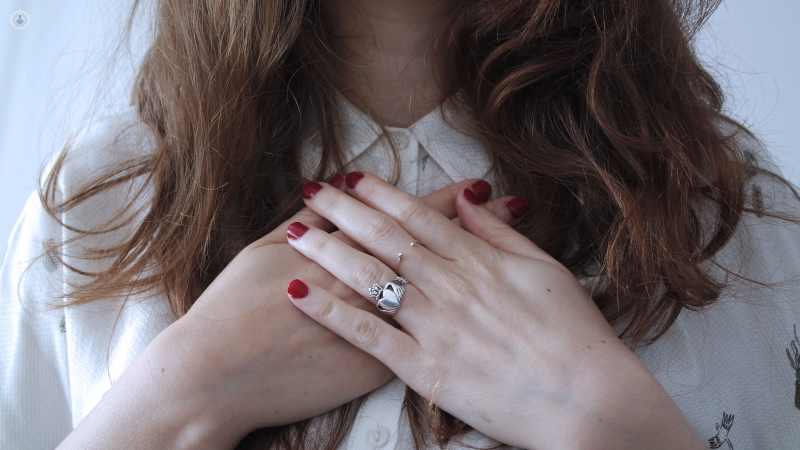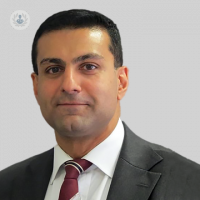The Stretta procedure for acid reflux relief
Escrito por:Acid reflux is a fairly common problem, and is often manageable by watching what you eat. However, in some people, it can become a recurring problem that has a big impact on their day-to-day lives. Stretta is one procedure that aims to solve the problem in a unique way. Dr Rehan Haidry, a pioneering gastroenterologist is here to explain.

What is Stretta?
Stretta is a minimally invasive endoscopic treatment for patients with proven gastro-oesophageal reflux disease (GORD). In essence, Stretta is a procedure where we use something called radiofrequency therapy. Radiofrequency is used in a variety of other conditions in medicine.
Stretta involves using an endoscope (a long thin tube with a camera), equipped with an inflating balloon and electrodes. These deliver very low-energy radiofrequency to the muscle layer at the base of the gullet (known as the lower oesophageal sphincter), which separates the oesophagus from the stomach. It not only heats up the muscle, but cools it by irrigating it straight after with cold water.
How exactly Stretta works is open to debate, but the schools of thought are that it causes the muscle of the lower oesophageal sphincter, which has previously weakened, to thicken. This thickening helps to combat the symptoms of acid reflux. There is other scientific evidence that it improves sensitivity and compliance. The mechanism is poorly understood, but there’s now a lot of data that shows that it works – not only in short term, but in long term.
What happens during the procedure?
The patients have a standard endoscopy – the camera is passed through the mouth under deep sedation. A small balloon is fed down through the mouth. Radiofrequency treatment is applied with synchronous heating and cooling every 5 mm for six different levels, which involves the bottom of the gullet and top of stomach, where you also want to strengthen the muscle. It is usually performed as a day case and takes around 30 minutes to do.
What are the other treatment options used for GORD?
Aside from Stretta, treatment options for GORD include:
- Lifestyle changes
- Medical therapy
- Anti-reflux surgery
Acid reflux is not uncommon in the western world due to a combination of lifestyle, obesity, diet, etc. Once or twice a month, the average westerner will have symptoms of acid reflux, like indigestion and heartburn. This can be managed with lifestyle interventions.
Patients with milder, chronic symptoms may need medical therapy in the form of tablets. The most common are PPIs (proton pump inhibitors). These have been shown to be very effective in terms of reducing acid exposure and in terms of improving symptoms. However, over the past 5-7 years, there has been data to show these tablets have some potential long-term side-effects. One has to be careful before subjecting patients to long-term treatment with these tablets and be sure you are doing it for the right reason.
Anti-reflux surgery is recommended for the 5-10% of patients who have severe acid reflux. The procedure is called laparoscopic fundoplication. It is a minimally invasive procedure to reduce large hiatus hernias. It involves wrapping the top of stomach around the oesophagus.
Other endoscopic treatments becoming popular include TIF (transoral incisionless fundoplication) – surgery performed through the endoscope. It is still very early to know how effective this is compared to other treatments.
Who is eligible to have Stretta?
Type of patients eligible for Stretta are those who:
- Have mild to moderate reflux, with symptoms impacting quality of life
- Are intolerant to PPI drugs
- Have a hiatus hernia of less than 2-3 cm.
What are the benefits of Stretta?
The benefits are:
- It is minimally invasive – patients don’t have to undergo open surgery.
- It’s an option for patients with breakthrough symptoms of reflux despite using escalating doses of medical therapy.
- Patients who can’t tolerate medical therapy.
- It is a very attractive, advantageous option for patients who want to stop medical therapy or who don’t want to have or are not good candidates for surgery.
The data shows that it not only works in the short term, but even at 5-7 years there is reduced acid exposure of the lower oesophagus. The treatment significantly and substantially improves heartburn symptoms and quality of life.
Also, there are studies that show the daily use of medication therapy is reduced in patients who have the Stretta procedure. One study from 2013 showed that in over 200 patients after Stretta quality of life improved and heartburn and use of medication was reduced.
If you are interested in the Stretta procedure, visit Dr Haidry’s Top Doctors profile and book a consultation today!


